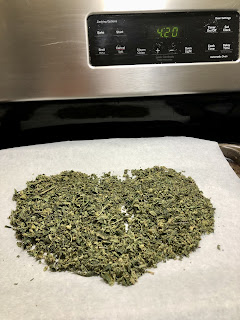Photoperiod vs. Autoflower Cannabis Plants: A Comparative Guide for Indoor and Outdoor Growing
Affiliate Link Disclaimer: This post may contain affiliate links. If you make a purchase through these links, we may earn a small commission at no extra cost to you. We only recommend products and services we believe in and trust. Your support helps us continue providing valuable content. Thank you for your support!
Cannabis cultivation has witnessed a surge in popularity, thanks to the increasing availability of different strains and growing methods. When it comes to choosing between photoperiod and auto-flowering cannabis plants, understanding the differences can be crucial for a successful harvest. In this guide, we'll compare the two types for both indoor and outdoor growing scenarios.
Photoperiod Cannabis Plants
1. Custom Control: Photoperiod strains require precise control of light schedules to trigger flowering. Indoors, this means adjusting the hours of light and dark, which can be challenging for beginners. Outdoors, you rely on nature's changing seasons.
2. Extended Growth: Photoperiod strains typically have a longer vegetative stage, allowing for more extensive training and pruning techniques. This can result in larger yields, given the right conditions and care.
3. Ideal for Experienced Growers: Cultivators with experience can maximize the potential of photoperiod plants, tailoring their growth to specific requirements. This makes them a preferred choice for those who have honed their skills.
4. Varied Effects: Photoperiod strains often offer a wider range of effects, from high-THC sativas to relaxing indicas. This diversity appeals to cannabis connoisseurs who appreciate the nuanced differences in strains.
Here are my favorite photoperiod strains that I have successfully grown indoors and outdoors:
Autoflower Cannabis Plants
1. Easy for Beginners: Autoflowers are beginner-friendly due to their simplicity. They start flowering automatically after a few weeks, regardless of light conditions. Indoors, you can maintain a consistent light cycle without worrying about changing the schedule.
2. Quick Turnaround: Autoflowers have a shorter life cycle, usually around 10-12 weeks from seed to harvest. This rapid growth is advantageous for those looking for a faster harvest.
3. Indoor or Outdoor Flexibility: Autoflowers are versatile and can thrive both indoors and outdoors. Their compact size and discreet nature make them suitable for smaller spaces or those looking to maintain a low profile.
4. Consistent Effects: While autoflowers may have slightly lower THC levels on average compared to photoperiod strains, their effects are generally consistent and well-balanced.
Here are my favorite Auto Flower strains that I have successfully grown indoors and outdoors:
Alaskan Purple Auto Feminized Seeds
Strawberry Cheesecake Auto Feminized Seeds
Blueberry Auto Feminized Seeds
In summary, the choice between photoperiod and auto-flower cannabis plants depends on your experience level, growing space, and desired harvest time. Photoperiod strains offer more customization but require more attention, making them suitable for experienced growers. In contrast, autoflowers are beginner-friendly and ideal for quick, consistent results, whether you're cultivating indoors or outdoors. Ultimately, it's a matter of personal preference and your specific growing conditions.



Comments
Post a Comment